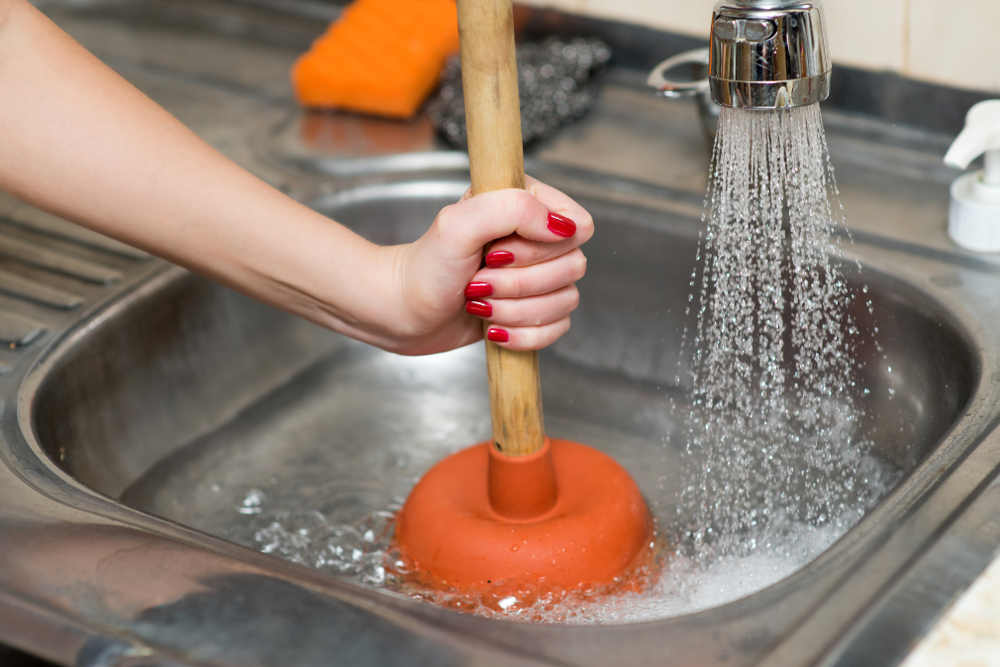Have you ever dealt with a clogged drain? If you own a home, chances are you’ve faced this pesky issue at least once. Whether it’s a slow-draining sink or a completely blocked shower, clogged drains can be a major headache. But understanding the different types of drain clogs can not only help you tackle them more effectively but also prevent future occurrences.
In this blog, we’ll explore the common types of drain clogs, their impact on household plumbing, and the best methods to fix them. By the end, you’ll be better equipped to maintain your drains and know when it’s time to call in the professionals at Saffer Plumbing, Heating & Electrical.
Common Types of Drain Clogs
Because drain clogs are so annoying and messy, many homeowners wish to get ahead of the issue. This leads them to wonder what exactly clogs pipes. The answer is nuanced, so you will need to consider an array of factors — from hair to tree roots. Here are the most common types of clogs that can affect your home’s drains and piping:
Hair Clogs
Hair clogs are one of the most frequent culprits behind clogged shower and sink drains. Hair strands can easily accumulate in the pipes, forming tangled masses that block the flow of water. Over time, these clogs can become more stubborn as they trap soap scum and other debris. To prevent hair clogs, consider using a drain cover or hair catcher.
Grease Clogs
Grease clogs are notorious in kitchen sinks. When hot grease or oil is poured down the drain, it can solidify as it cools, coating the pipes and trapping food particles. This type of clog can be particularly challenging to remove and may require professional intervention. To avoid grease clogs, never pour grease down the drain; instead, dispose of it in a container in the trash.
Soap Scum Clogs
Soap scum is another common cause of clogged drains, especially in bathrooms. The residue from soap combines with minerals in the water to form a sticky film that can line the pipes. Over time, this buildup can restrict water flow and cause blockages. Regular cleaning and the use of liquid soap can help reduce soap scum accumulation.
Food Particles
Food particles are a major cause of kitchen drain clogs. Small bits of food can get trapped in the pipes, especially if you don’t have a garbage disposal. Starchy foods like pasta and rice can expand with water, exacerbating the problem. To prevent food clogs, use a sink strainer and avoid flushing large food scraps down the drain.
Mineral Buildup
In areas with hard water, mineral buildup can be a significant issue. Minerals like calcium and magnesium can accumulate inside the pipes, leading to reduced water flow and clogs. This type of clog is more common in older homes with galvanized pipes. Installing a water softener can help mitigate mineral buildup.
Tree Roots
Tree roots can invade underground pipes, causing severe blockages and damage. They are attracted to the moisture in the pipes and can grow into the smallest cracks or joints. Tree root clogs are often difficult to detect and usually require professional plumbing services to address. Regular inspection and maintenance of your sewer lines can help prevent root intrusion.
Methods to Fix Drain Clogs
Now that we’ve identified the different types of drain clogs, let’s discuss how to fix them. There are various methods to clear clogged drains, ranging from DIY solutions to professional services.
DIY Solutions
For minor clogs, there are several do-it-yourself methods you can try:
- Plunger: A plunger can be effective for clearing clogs in sinks and toilets. Ensure you create a good seal around the drain and use vigorous, steady pressure.
- Drain Snake: Also known as a plumber’s snake, this tool can reach deep into the pipes to dislodge clogs. It’s particularly useful for hair and small debris clogs.
- Baking Soda and Vinegar: This natural solution can help break down minor clogs. Pour a cup of baking soda down the drain, followed by a cup of vinegar. Let it sit for 15-30 minutes, then flush with hot water.
The Dangers of Chemical Drain Cleaners
While chemical drain cleaners are widely available, they come with significant risks. These products contain harsh chemicals that can corrode your pipes, especially if used frequently. Additionally, they can be harmful to the environment and pose health risks if not handled properly. It’s best to avoid chemical drain cleaners and opt for safer alternatives or professional services.
Professional Solutions
For stubborn or recurring clogs, it’s advisable to seek professional help. Residential plumbers have the expertise and equipment to handle all types of clogs efficiently. Some of the methods they use include:
- Camera Inspection: A camera inspection can help identify the exact location and cause of the clog, allowing for targeted solutions.
- Hydro Jetting: This technique uses high-pressure water to clear out blockages and clean the interior of the pipes. It’s effective for grease, mineral buildup, and tree root clogs.
- Pipe Replacement: In severe cases where the pipes are damaged or severely clogged, replacing the affected section of the pipe may be necessary.
Say Goodbye to Drain Clogs With the Help of Saffer Plumbing
Understanding the different types of drain clogs and how to address them can save you time, money, and frustration. Just remember that when you encounter a clog you can’t handle on your own, it’s important to seek professional assistance.
At Saffer Plumbing, Heating & Electrical, we offer comprehensive drain cleaning services in Baltimore, MD, and the neighboring communities. Our experienced team can handle all types of drain clogs, so you can trust us to keep your plumbing system running smoothly. Contact us today to schedule a service and never stress over a drain clog again.

